Practical Molecular Docking with DiffDock & Neurosnap.
Written by Keaun Amani | Published 2023-6-7
Written by Keaun Amani | Published 2023-6-7
In the vast realm of pharmaceutical research, scientists are constantly engaged in the quest to discover new therapeutic molecules that can combat diseases and improve human health. However, identifying the right drug candidates from an extensive pool of potential compounds is a daunting challenge. This is where molecular docking, a computational technique, comes into play as a powerful tool that offers valuable insights into the interactions between small molecules and target proteins. By simulating the binding process between drugs and their respective targets, molecular docking helps scientists predict and optimize the efficacy of potential drug candidates, ultimately expediting the drug discovery process.
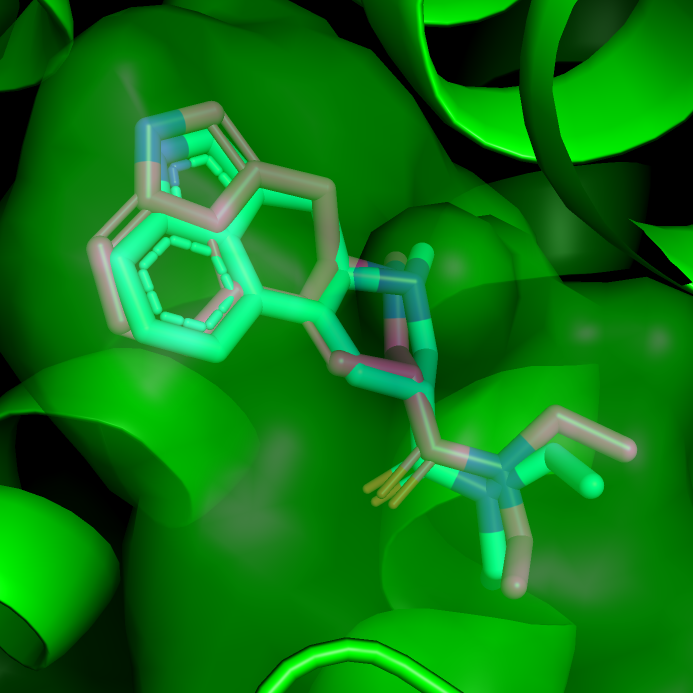
Molecular docking is a technique used to explore the molecular interactions between a small molecule, typically a drug candidate, and a target protein of interest. The target protein could be an enzyme, receptor, or any other biomolecule associated with a specific disease or biological process. The ultimate goal is to predict the most favorable binding conformation and affinity between the small molecule and the target protein, thereby elucidating their potential interactions at the atomic level. By providing valuable insights into the three-dimensional structure of the complex formed by the small molecule and target protein, molecular docking aids researchers in understanding the fundamental mechanisms of drug action and designing more potent and selective drugs.
At its core, traditional methods rely on the principles of molecular mechanics and computational algorithms to explore the vast conformational space of ligand-target interactions. This can be done by utilizing various scoring functions and search algorithms to evaluate and rank the binding poses of the small molecule within the target protein's binding site. By considering factors such as steric clashes, hydrogen bonding, electrostatic interactions, and hydrophobic interactions, molecular docking algorithms provide a quantitative assessment of the binding affinity between the small molecule and the target protein. Through virtual screening of vast compound libraries, molecular docking enables the identification of potential lead compounds for further experimental validation, saving valuable time and resources in the drug discovery process.
DiffDock is a novel and state-of-the-art method for performing Molecular Docking using deep learning. It was developed by a team of researchers at MIT and utilizes a diffusion based architecture similar to models like StableDiffusion.
Instead of treating docking as a regression problem, DiffDock frames it as a generative modeling problem by developing a diffusion process over the non-Euclidean manifold of ligand poses. This manifold is mapped to the product space of the degrees of freedom involved in docking (translational, rotational, and torsional), and the diffusion process is developed on this space. DiffDock has fast inference times and provides confidence estimates with high selective accuracy.
It's significantly more accurate than previous methods because of its ability to reason at a higher scale and implicitly model some of the protein's flexibility. It maintains high performance, even as other docking models begin to fail. In the more realistic scenario involving the use of computationally generated unbound protein structures, DiffDock places 22% of its predictions within 2Å, which is widely considered to be the threshold for an accurate pose, more than double other docking models that barely hover over 10% for some and dropping as low as 1.7%.
Neurosnap provides the best and easiest way to freely access models like DiffDock. Simply select the model on our services page and then provide an input structure for receptor and target ligand.
Our platform will automatically perform the rest for you.
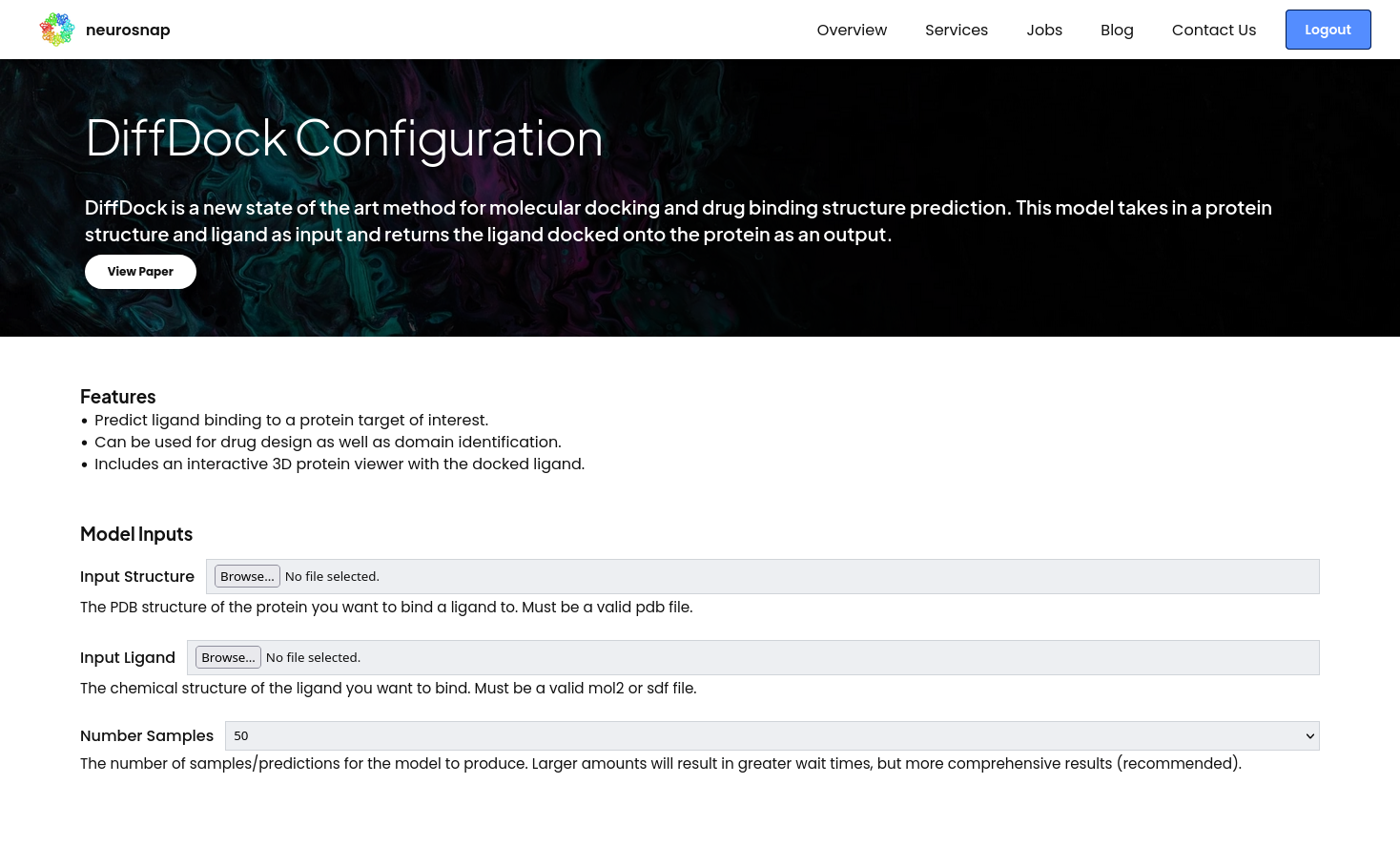
DiffDock provides a confidence metric creatively titled DiffDock Confidence where higher values tend to correspond to better predictions. On Neurosnap we also calculate additional metrics using SMINA, a fork of the program Autodock VINA. We use the SMINA metrics as a secondary information that can be used to evaluate DiffDock predictions.
Generally speaking, a DiffDock prediction can be considered reasonably accurate if it satisfies the following conditions:
DiffDock Confidence levels tend to mean better predictions. In general this value should be at least positive, though there are some exceptions.DiffDock Confidence, SMINA Affinity, SMINA Minimized Affinity, and SMINA Minimized RMSD the better. This is usually a strong indicator that DiffDock and SMINA agree with one-another's predictions which fundamentally means you now have two models betting on the same ligands.In this example we use DiffDock to predict the interaction between LSD and the human 5-HT2b receptor (5TVN), also known as one of the human serotonin receptors. We intentionally use 5TVN as the crystal structure as it includes a bound LSD molecule to compare our results to. Also note that on neurosnap we automatically clean uploaded receptors and PDB files to prevent the model from "cheating".
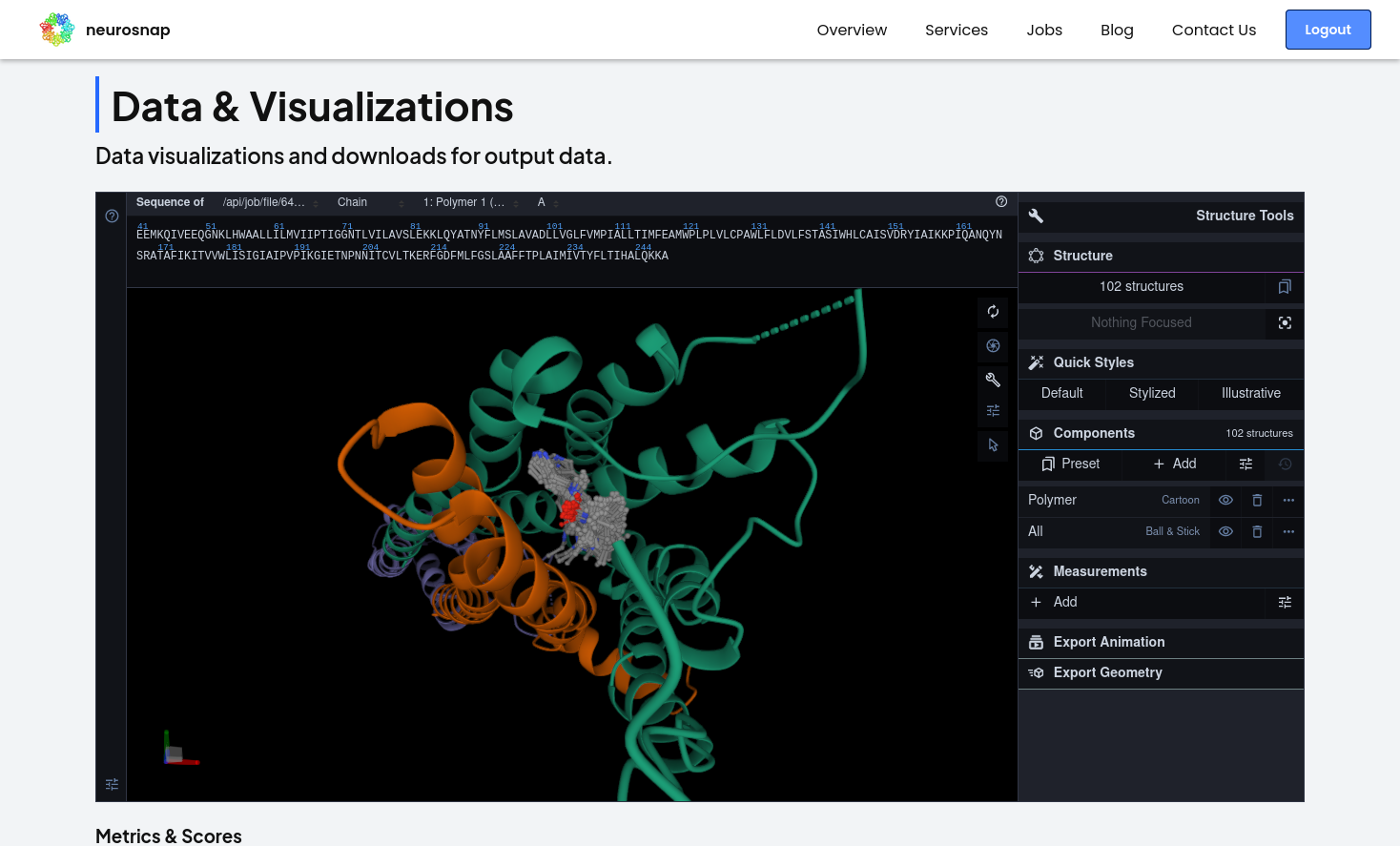
As we can see from the results, DiffDock is able to accurately predict the conformation between these two molecules with high confidence. The main way to tell whether DiffDock is confident
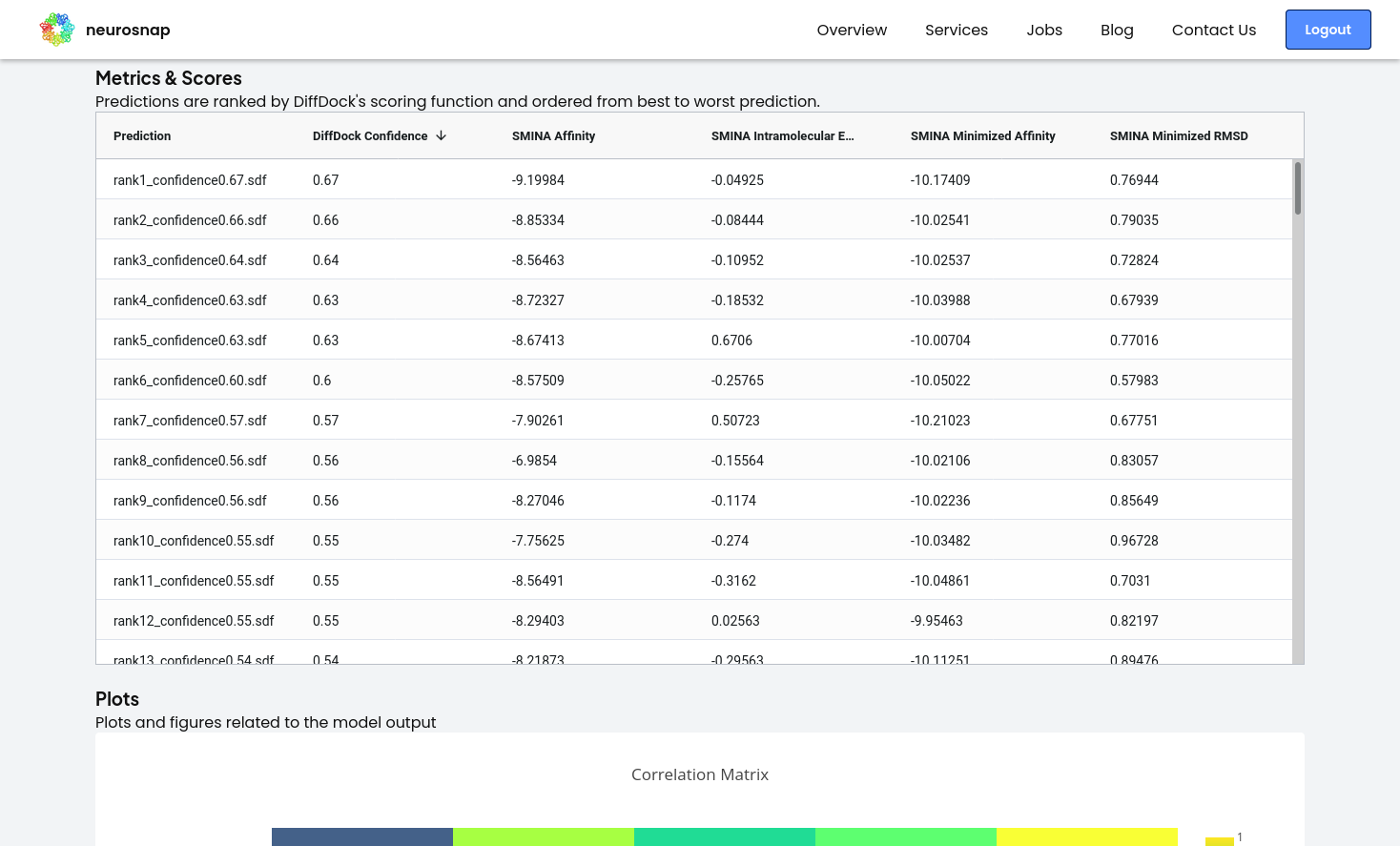
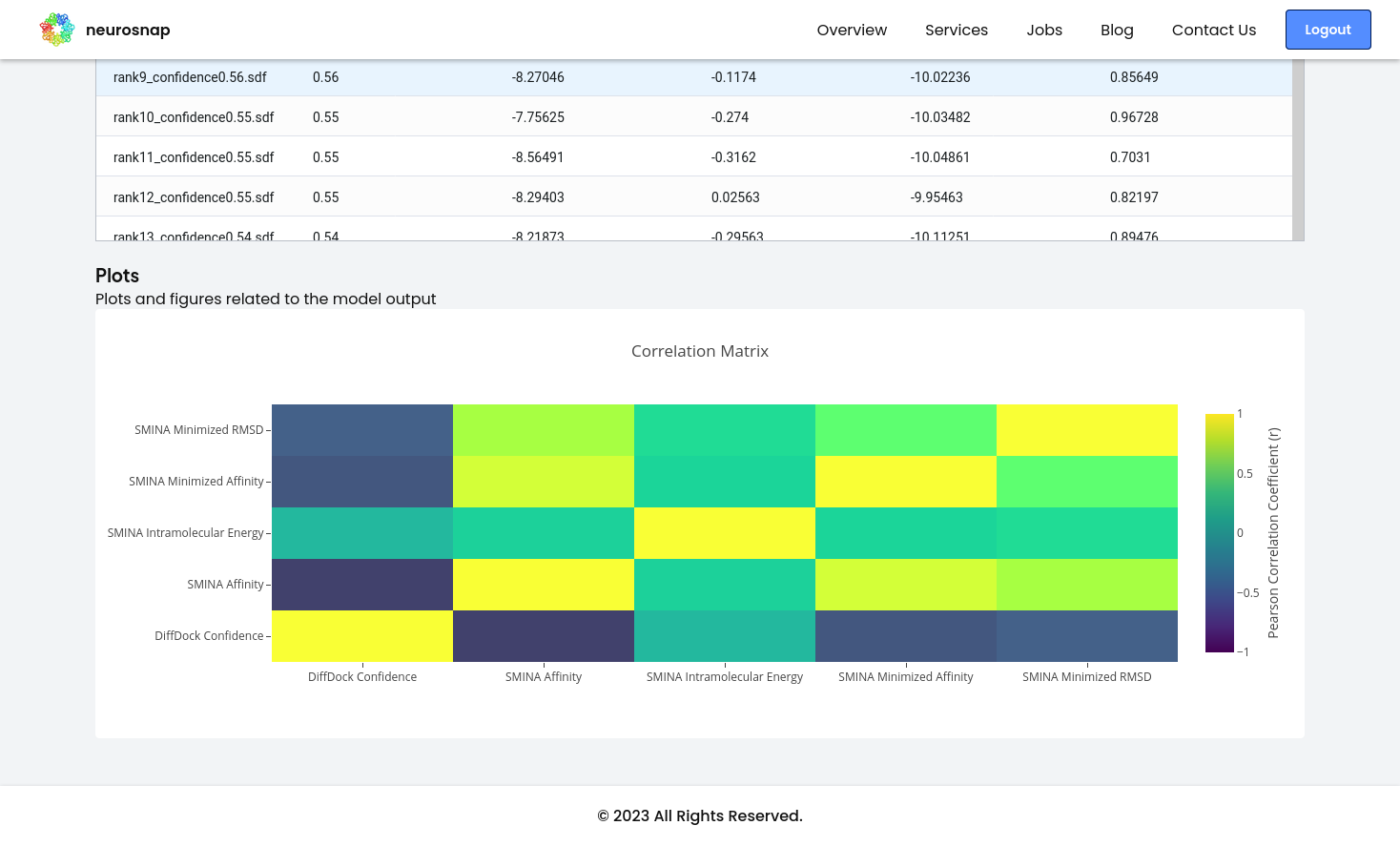
Also feel free to check out a live demo of this job right here.
DiffDock, combined with the user-friendly interface of Neurosnap, opens new possibilities for researchers in the field of drug discovery. By accelerating the drug discovery process and providing reliable predictions, DiffDock offers a powerful tool to enhance pharmaceutical research and ultimately improve human health.
By Keaun Amani
By Colorado Wilson
By Danial Gharaie Amirabadi
By Keaun Amani
By Danial Gharaie Amirabadi
By Keaun Amani
Register for free — upgrade anytime.
Interested in getting a license? Contact Sales.
Sign up free